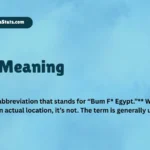Maundy Thursday—also called Holy Maundy Thursday or the Thursday of the Mysteries—is a cornerstone of the Christian liturgical calendar. It falls on the Thursday before Easter and commemorates Jesus Christ’s final supper with his disciples, his act of foot-washing, and the institution of the Eucharist.
Beyond its religious significance, Maundy Thursday offers profound themes of humility, service, covenant, and transition.
1. Historical and Biblical Roots
1.1 Origin of the Term “Maundy”
The word Maundy comes from the Latin mandatum, meaning “command.” In John 13:34, Jesus says to his disciples: “A new command I give you: Love one another as I have loved you.” This act—of giving a new mandate—gives Maundy Thursday its name.
1.2 Scriptural Accounts
All four Gospels (Matthew 26, Mark 14, Luke 22, and John 13–17) describe Jesus’ last evening with his disciples. Key events include:
- The Last Supper, during which Jesus shares bread and wine—symbols of his body and blood—and instructs them to continue this rite.
- The foot-washing ceremony (in John 13), demonstrating servant leadership and humility.
- In John’s Gospel, Jesus’ extended High Priestly Prayer—highlighting themes of unity, love, and divine mission.
See Also: JFC Meaning Updated (2025) – Usage, Alternatives, and Context
1.3 Liturgical Observances
In Western Christianity, Maundy Thursday marks the start of the Easter Triduum:
- Mass of the Lord’s Supper: Includes the washing of feet and Eucharist.
- Stripping of the Altars: Altars are cleared afterward, symbolizing Jesus’ abandonment.
- Procession of the Blessed Sacrament: The consecrated Eucharist is moved to a place of quiet, reflecting Jesus in Gethsemane.
In Eastern Orthodox churches, the day emphasizes profound liturgical symbolism, including foot-washing and theological hymns about betrayal and sacrifice.
2. Thematic Meaning
2.1 Covenant and Sacrifice
The Last Supper establishes a new covenant, with Jesus predicting his death and instructing his followers to continue the ritual in remembrance. This sacrificial covenant is central to Christian theology.
2.2 Humility and Service
Jesus, the master and teacher, takes on the role of a servant—kneeling before his disciples to wash their feet. This act reverses social norms and elevates humility as a core Christian virtue.
2.3 Love and Unity
The “new command” emphasizes love: mutual, sacrificial, and kingdom-focused. The unity of believers—“that they may all be one”—is a recurring theme in Jesus’ teaching that night.
2.4 Anticipation and Transition
Maundy Thursday is a pivotal moment: from the height of public ministry to the imminent crucifixion. Liturgically, it bridges joyful commemoration and sombre mourning.
3. “Maundy Thursday Meaning” in Text and Speech

Explaining Maundy Thursday requires nuance—balancing theological depth with accessibility. Here are effective phrasing approaches:
3.1 Simple Definition
“Maundy Thursday marks the night Jesus celebrated the Last Supper, washed his disciples’ feet, and gave a new command to love one another.”
3.2 Contextual Explanation
“Each Maundy Thursday, Christians remember Jesus’ final meal with his disciples, where he introduced the Eucharist and demonstrated servant leadership by washing their feet.”
3.3 Thematic Summary
“Maundy Thursday symbolizes humility, service, and covenant—it’s when Jesus taught that the greatest leaders are those who serve.”
These phrasing styles help readers grasp the depth of the day without overwhelming them.
Read Also: Lumon & Hiatus Meaning Explained | Full 2025 Guide
4. “Hiatus Meaning of Maundy Thursday Meaning”

The phrase “hiatus meaning” here implies a pause or reflective break in everyday life. Maundy Thursday serves as a hiatus—a sacred interval between active ministry and the tragic, redemptive events of Good Friday and Easter.
4.1 Liturgical Hiatus
In worship, Maundy Thursday intentionally “pauses” the liturgical flow:
- The rich music of Lent gives way to solemn rituals.
- After Communion, altars are stripped, lights dim—the congregation enters a space of quiet anticipation.
4.2 Spiritual Hiatus for Personal Reflection
For believers, it’s a moment to step out of routine:
- Reflect on the meaning of service.
- Reexamine the quality of love being shared in daily life.
- Reconnect with covenant values.
By embracing this hiatus, people enter Good Friday with greater spiritual focus and emotional awareness of the unfolding Passion.
5. Polite, Professional, and Casual Alternatives
What follows is a curated list of eleven thoughtful ways to refer to or greet someone on Maundy Thursday. These are arranged for polite, professional, and casual use, each with context, tone, and example.
5.1 Polite Alternatives
- “Wishing you a reflective Maundy Thursday.”
Context: Greeting cards, quiet social media.
Nuance: Respectful and introspective. - “May your Maundy Thursday bring peace and purpose.”
Context: Letters to friends or church bulletins.
Nuance: Warm, thoughtful. - “Honoring the gifts of service and sacrifice this Maundy Thursday.”
Context: Contemplative articles, sermon intros.
Nuance: Elevated, reverent tone.
5.2 Professional Alternatives
- “In observance of Maundy Thursday, our offices will pause for reflection.”
Context: Workplace emails, corporate calendars.
Nuance: Formal, inclusive. - “Today, we commemorate Maundy Thursday: a celebration of service, humility, and unity.”
Context: Organizational announcements, news blurbs.
Nuance: Factual, respectful. - “Join us for our Maundy Thursday service featuring foot‑washing and Communion.”
Context: Church bulletins, event reminders.
Nuance: Informative, professional.
5.3 Casual Alternatives
- “Happy Maundy Thursday—don’t forget the foot‑washing service tonight!”
Context: Informal texts, social posts.
Nuance: Friendly, playful. - “Reflecting on Maundy Thursday tonight—feeling grateful.”
Context: Personal social media.
Nuance: Casual and sincere. - “Maundy Thursday vibes: humility, service, and communion.”
Context: Instagram story or informal chat.
Nuance: Trendy, respectful. - “Enjoy a peaceful Maundy Thursday, folks!”
Context: Group messages, casual email sign-offs.
Nuance: Warm, brief.
5.4 Universal Gesture
- “Thinking of you on Maundy Thursday—may love and service guide your day.”
Context: Closely personal interactions across all tones.
Nuance: Gentle, supportive.
6. Nuances of Tone and Context
Choosing the right expression depends on context:
- Polite tone works best for acquaintances or less familiar audiences.
- Professional tone is ideal for workplace, organizational contexts.
- Casual tone fits friends, close circles, or conversational mediums.
6.1 Aligning Tone with Audience
| Audience Type | Ideal Tone | Example Phrase |
|---|---|---|
| Distant friend | Polite | “Wishing you a reflective Maundy Thursday.” |
| Church congregation | Professional | “Join us for our Maundy Thursday service featuring foot‑washing and Communion.” |
| Close friend | Casual | “Maundy Thursday vibes: humility, service, and communion.” |
7. Exploring Deeper: Service as Expression
We’ve mentioned service several times. Here’s how that theme can be woven into conversation or writing about Maundy Thursday:
- Vision statement: “Let Maundy Thursday inspire us to serve—not just today but every day.”
- Reflection question: “Who can I serve in humility, as Jesus washed his disciples’ feet?”
- Peacemaking prompt: “In what ways can we live out unity and love in our communities this Maundy Thursday?”
In each case, “service” echoes the foot-washing act without repeating it word-for-word.
8. Messaging Across Mediums
8.1 Social Media Post (Casual)
“Maundy Thursday vibes tonight. Reflecting on love, service, and that heart‑scrubbing moment 😉.”
8.2 Professional Email Notice
Subject: Observance of Maundy Thursday
Body:
“Dear Team,
Please note that tomorrow is Maundy Thursday. In honor of this solemn day, we encourage a moment of reflection on service and unity.
Warm regards,
[Your Name]”
8.3 Greeting Card (Polite)
“May this Maundy Thursday bring moments of stillness, humility, and deep gratitude into your heart.”
✅ 11 Example Phrases Recap
- “Wishing you a reflective Maundy Thursday.”
- “May your Maundy Thursday bring peace and purpose.”
- “Honoring the gifts of service and sacrifice this Maundy Thursday.”
- “In observance of Maundy Thursday, our offices will pause for reflection.”
- “Today, we commemorate Maundy Thursday: a celebration of service, humility, and unity.”
- “Join us for our Maundy Thursday service featuring foot‑washing and Communion.”
- “Happy Maundy Thursday—don’t forget the foot‑washing service tonight!”
- “Reflecting on Maundy Thursday tonight—feeling grateful.”
- “Maundy Thursday vibes: humility, service, and communion.”
- “Enjoy a peaceful Maundy Thursday, folks!”
- “Thinking of you on Maundy Thursday—may love and service guide your day.”
Frequently Asked Questions
What does Maundy Thursday mean?
Maundy Thursday commemorates the Last Supper of Jesus with his disciples. It highlights themes of love, service, and the institution of the Eucharist.
Why is it called “Maundy” Thursday?
The word “Maundy” comes from the Latin mandatum, meaning “command.” It refers to Jesus’ command to love one another.
What does Maundy Thursday mean in text?
In text, it often refers to a moment of solemn reflection or pause. It symbolizes humility, service, and spiritual preparation before Easter.
How is Maundy Thursday observed today?
Many churches hold special services, including Communion and foot-washing. It’s a day for prayer, reflection, and acts of kindness.
Is Maundy Thursday a public holiday?
It depends on the country; in some places, it’s a public holiday. In others, it’s primarily observed within religious communities.
Conclusion
Maundy Thursday weaves together themes of humility, service, sacrificial love, and transition. It offers both a liturgical “hiatus” and a moment of renewed spiritual purpose. Whether you’re writing an email, posting on social media, or sharing a reflection in a card, choosing the right tone and words helps convey its deep meaning. The 11 examples above provide versatile ways to speak from casual to professional, each rooted in respect and clarity.



